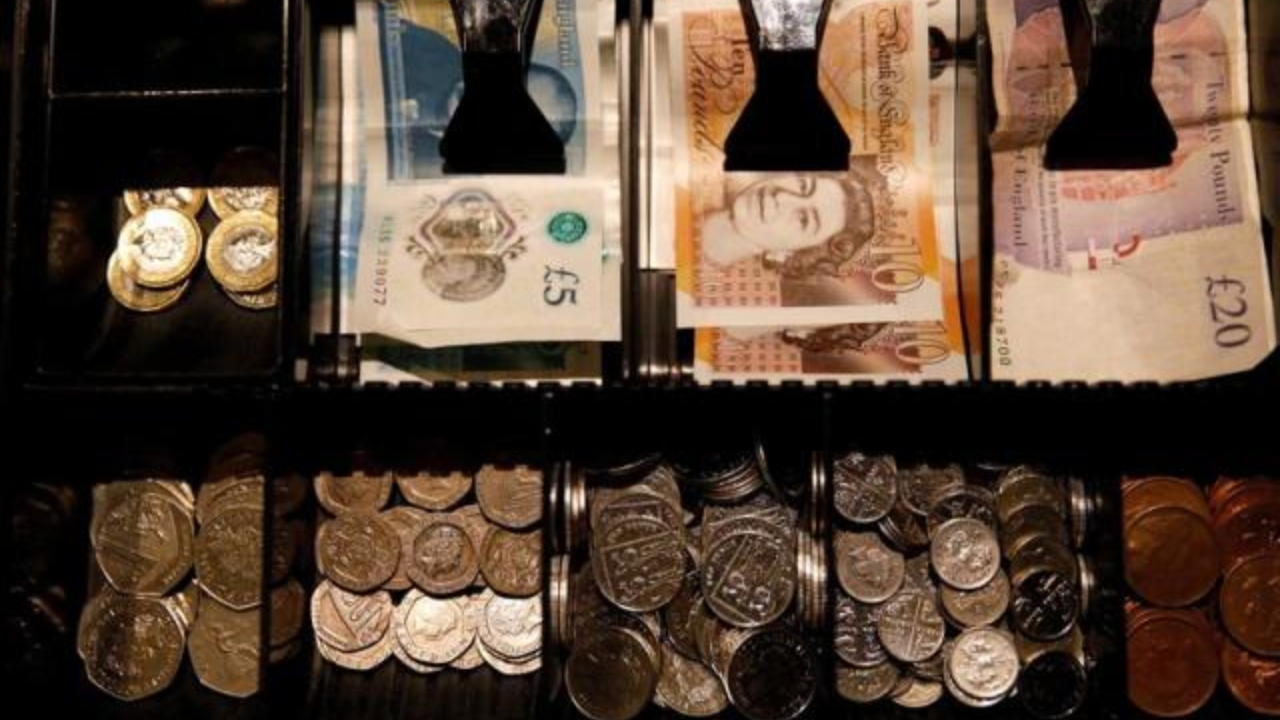
By: Payel
Published on: Jun 04, 2025
The British pound edged lower against the U.S. dollar on Tuesday, following a downgraded economic growth forecast for the UK by the Organisation for Economic Cooperation and Development (OECD). The revised outlook has raised investor concerns about the pace of economic recovery in the UK and other major global economies, prompting shifts across currency, gold, and oil markets.
The OECD's latest economic report projects UK GDP growth at 1.3% for 2025—down from a previously expected 1.4%—and a further decline to 1.0% in 2026, compared to its earlier forecast of 1.2%. These downward revisions were echoed by a cautious tone in global markets, which have already been jittery over inflationary concerns, U.S. tariffs, and geopolitical tensions.
On Tuesday, the GBP/USD currency pair (GBPUSD=X) slipped nearly 0.2%, trading at $1.3519. The OECD’s report has been a primary driver of this shift, as it emphasized a cooling global growth trend with rising uncertainty.
“The slowdown is concentrated in the United States, Canada, and Mexico, with China and other economies expected to see smaller downward adjustments,” the OECD stated.
The organization now forecasts global GDP to decelerate from 3.3% in 2024 to 2.9% in both 2025 and 2026. While the revisions may seem modest, market analysts say the tone of the report has spooked traders and investors alike.
Despite its fall against the dollar, the pound saw a marginal uptick versus the euro. GBP/EUR (GBPEUR=X) reached €1.184, bolstered by the eurozone’s flash inflation reading, which came in at 1.9% year-on-year in May, just below the European Central Bank’s 2% target. Investors are now watching the ECB’s upcoming interest rate decisions for further clues on currency direction.
Adding fuel to the market volatility is the looming deadline of a 90-day pause on global tariffs, which is set to expire in July. Reports suggest that U.S. President Donald Trump is pushing trade partners to submit their best offers by midweek, seeking to resolve potential gridlocks before they escalate.
Russ Mould, Investment Director at AJ Bell, noted:
“While the OECD's global growth forecast cut is a small revision, it’s enough to cause some indigestion for markets already grappling with tariff uncertainty.”
On Monday, China strongly rebutted Trump’s claims of violating a temporary trade agreement. Meanwhile, the European Union criticized the U.S. president's decision to double tariffs on steel and aluminum imports, branding it a destabilizing move.
The dollar index (DX-Y.NYB), which tracks the greenback against a basket of major currencies, rose 0.2% to 98.91, although it remains down 0.9% over the past five sessions. A stronger dollar generally creates downward pressure on commodities and emerging market currencies, including the pound.
Gold prices dipped as the dollar gained strength. Gold futures (GC=F) fell 0.4%, reaching $3,382.30 per ounce, while spot gold declined 0.7% to $3,356.98 per ounce.
Gold’s inverse relationship with the U.S. dollar is well documented. A rising greenback makes the metal more expensive for foreign buyers, decreasing demand and pushing prices downward.
Despite near-term weakness, Bank of America analysts remain bullish on gold, citing long-term macro uncertainty, potential inflation from Trump’s tariffs, and elevated global debt levels as supportive fundamentals.
“There’s risk that emerging market central banks will reduce gold buying if their currencies fall due to tariffs,” the strategists warned. “Yet macro uncertainty continues to support gold in the longer term.”
Oil markets traded sideways on Tuesday, with Brent crude (BZ=F) holding steady at $64.59 per barrel and West Texas Intermediate (WTI) futures (CL=F) down 0.1% to $62.43 per barrel.
The muted reaction came after OPEC+ announced over the weekend that eight of its member countries agreed to increase output by 411,000 barrels per day.
Jim Reid, market strategist at Deutsche Bank, commented:
“Markets had already priced in the OPEC+ move, and the output hike was smaller than feared.”
Still, the OECD’s global economic forecast added downside pressure, as weaker global growth could curtail energy demand, capping any potential rally in crude oil.
The combination of downward growth revisions, ongoing tariff talks, and global inflation uncertainty has put investors in a risk-off mood. Safe-haven assets like gold saw brief upticks last week, while currency and commodity markets continue to see wild swings.
With the Trump administration set to respond to a federal appeals court ruling on tariffs by Monday, June 9, traders are bracing for more volatility in the week ahead.
The UK, in particular, will need to keep a close eye on the direction of global trade, as any policy change could have ripple effects on sterling, inflation, and broader economic sentiment.
The OECD’s revised outlook may have made only slight numerical changes, but the psychological impact on the markets is substantial. With the pound under pressure and commodities reacting to every political headline, traders are in for a choppy June.
Currency watchers will closely monitor sterling’s resilience in the face of geopolitical events, while gold and oil traders await clarity on demand dynamics and macroeconomic indicators.
For now, cautious optimism reigns—but investors should remain vigilant. The markets may not be pricing in all the potential outcomes of trade disputes, inflation risks, and central bank policies. Stay diversified, stay informed, and stay ahead.
Comments
No comments yet. Be the first to comment!
Leave a Comment